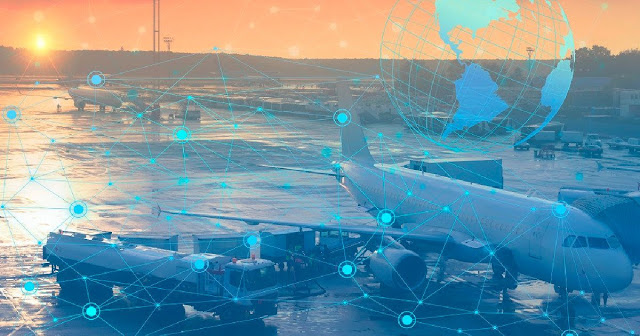Blockchain Technology in Aviation: Enhancing Security and Transparency
The aviation industry is at the forefront of technological advancements, constantly seeking innovative solutions to improve safety, efficiency, and transparency. One such groundbreaking technology that has gained significant attention in recent years is blockchain. Originally developed as the underlying technology for cryptocurrencies like Bitcoin, blockchain has evolved beyond the financial sector and found its application in various industries, including aviation.
In this article, we will explore how blockchain technology is revolutionizing the aviation sector, with a particular focus on enhancing security and transparency.
Blockchain Basics
At its core, blockchain is a decentralized and distributed ledger technology that enables secure and transparent recording of transactions across a network of computers. The key features of blockchain include decentralization, immutability, transparency, and security. These characteristics make it an ideal solution for industries like aviation, where trust, security, and transparency are paramount.
Enhancing Security in Aviation
1. Secure Data Management
Blockchain ensures secure data management by creating a tamper-resistant and immutable record of transactions. In the aviation industry, this translates to enhanced security for critical data such as maintenance records, flight logs, and pilot certifications. By storing this information on a blockchain, the risk of data manipulation or unauthorized access is significantly reduced.
2. Identity Verification
Ensuring the identity and credentials of individuals within the aviation ecosystem is crucial for safety and security. Blockchain technology can be employed for secure identity verification, allowing for a transparent and tamper-proof record of pilots' licenses, maintenance personnel certifications, and other essential credentials. This not only streamlines the verification process but also mitigates the risk of identity fraud.
3. Supply Chain Security
The aviation supply chain involves numerous stakeholders, from manufacturers to maintenance providers. Blockchain can be utilized to create a transparent and traceable supply chain, reducing the risk of counterfeit parts entering the system. Each step in the supply chain can be recorded on the blockchain, providing an auditable trail for regulators and stakeholders.
Enhancing Transparency in Aviation
1. Smart Contracts for Automation
Blockchain's smart contract functionality allows for the creation of self-executing contracts with predefined rules. In aviation, smart contracts can automate various processes, such as maintenance schedules and payment transactions. This not only increases efficiency but also ensures transparency, as all parties involved can view and verify the terms of the contract.
2. Flight Data and Tracking
Blockchain technology can be employed to enhance the transparency of flight data and tracking. Real-time updates on flight status, maintenance activities, and other relevant information can be securely recorded on the blockchain. This information is accessible to all authorized parties, promoting transparency and accountability.
3. Regulatory Compliance
The aviation industry is subject to stringent regulatory requirements. Blockchain's transparent and auditable nature simplifies compliance processes. Regulators can easily access and verify necessary information, reducing the administrative burden on aviation stakeholders and ensuring that all parties adhere to regulatory standards.
In conclusion, blockchain technology is emerging as a transformative force in the aviation industry, providing solutions to longstanding challenges related to security and transparency. By leveraging blockchain, the aviation sector can enhance data security, streamline operations, and build a more transparent ecosystem. As the technology continues to mature, we can expect further innovations that will revolutionize how the aviation industry operates, ensuring a safer and more efficient experience for all stakeholders involved.




Comments
Post a Comment